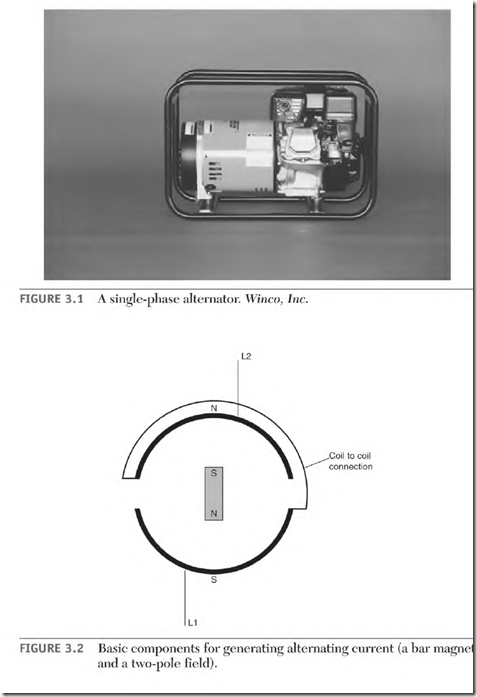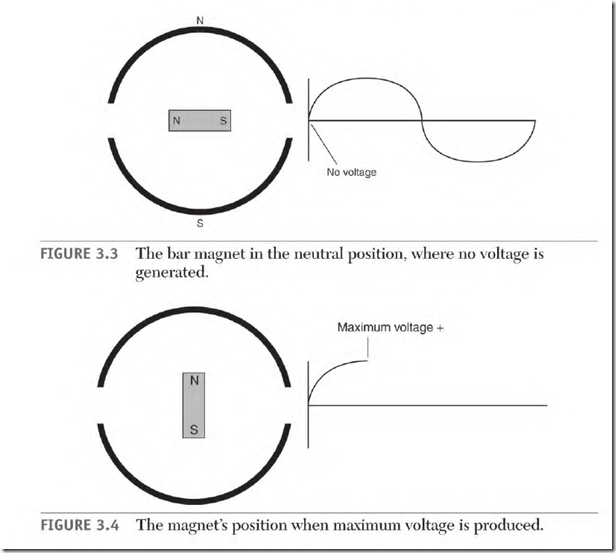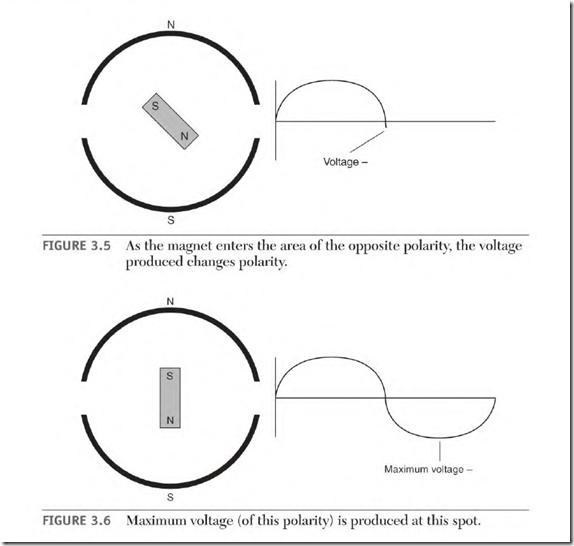NT early all commercial and domestic power consumed in the United L N States is AC. High-voltage AC power is carried great distances by power lines, with minimal power loss. Very little power is lost transforming AC to the voltage value required by a consumer. AC is much more versatile and practical than DC power. AC induction motors require much less maintenance than DC motors because most have no commutator. The variable-hertz drive gives the three-phase induction motor speed control that is almost as good as that of the DC motor.
AC Terminology
Generating Alternating Current
The operation of most AC motors is affected by the way AC power is produced. For this reason, the generating of AC power will be explained first.
AC alternators (also called generators) consist of a DC-excited rotor and a stator winding. Figure 3.1 shows a single-phase alternat01i The stator has one winding or phase.
In an AC alternator (Fig. 3.2), the conductors of the stator poles are cut by magnetic lines of force (flux) provided by rotating DC field coils. For clarity, a magnet will be used in the following explanation. The magnet will travel past two poles of the stator. As the magnet travels past the first stator pole, its magnetic flux cuts the conductors of the pole’s coils, producing a voltage.
In Fig. 3.3 the magnet is in the neutral position between the poles. As the magnet advances, its flux cuts the conductors of each stator pole, and voltage
is produced in them. The voltage (output) value will increase (Fig. 3.4) until the magnet becomes aligned with the stator poles. The voltage is now at peak positive value. As the magnet moves out of alignment, the voltage decreases.
When it again reaches the neutral position, the voltage is zero.
When the magnetic flux cuts the next pole (Fig. 3.5), the voltage output is negative. When the magnet becomes aligned (Fig. 3.6) with the stator poles, the output voltage is at its highest negative value. As the magnet moves out of alignment, the voltage output decreases until it is again in the neutral position. (One cycle of power has been produced.)
Cycles and Hertz
The number of cycles produced in 1 second is the power’s frequency. If one cycle of power is produced in 1/60 of a second, the frequency of the power
is 60 cycles per second (60 Hz). The word hertz (Hz) is used instead of the phrase cycles per second.


